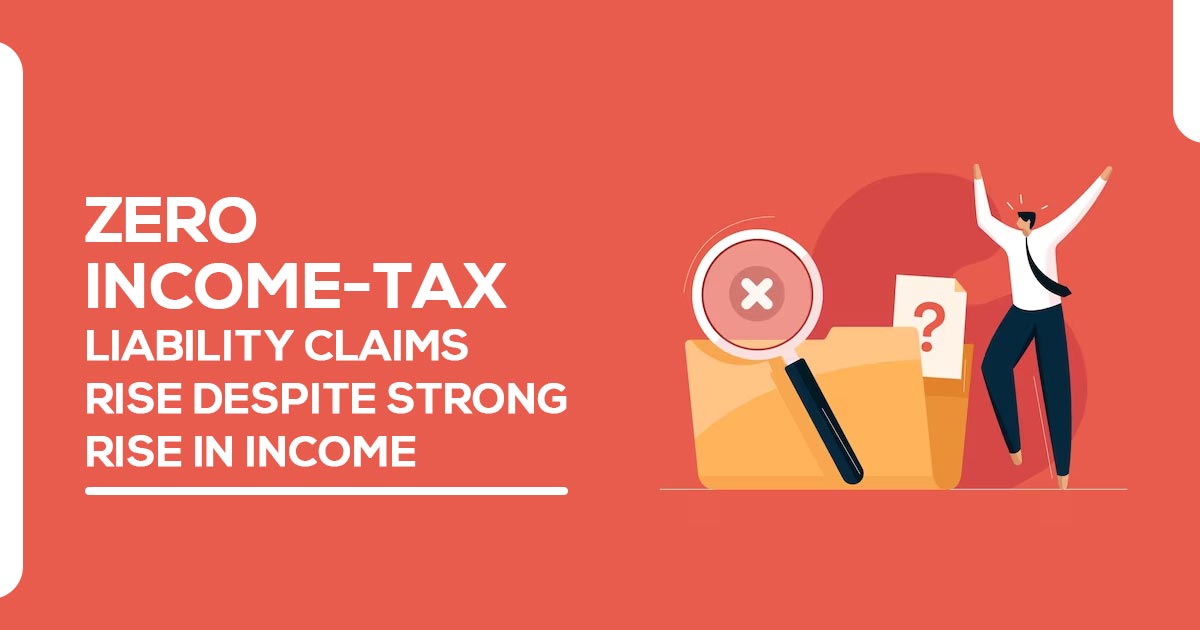
The count of individuals reporting zero-tax liability for their income from the prior year continued to rise. According to data provided by the income tax department, 44.6 million tax returns, constituting two-thirds of all filings for the 2021-22 assessment year, made this declaration.
This reflects a 4% increase in zero-tax returns compared to the previous assessment year, despite an overall income growth of over 14% in the tax returns filed for 2021-22, as per official data from the tax department.
Although the overall trend of increased tax return submissions indicates a broader tax base and enhanced compliance, the surge in returns claiming zero-tax liability sparks concerns about the extent of this expansion.
In the assessment year 2021-22, only 22.9 million tax returns showed a tax payment for the previous year’s income, a minuscule fraction of India’s 1.4 billion population. A substantial number of those filing returns either assert no tax obligation or receive full tax refunds, thereby reducing the count of contributors to the national treasury.
It is worth noting that the number of tax return filers does not encompass individuals whose taxes were deducted at the source, such as by their employers, but who have yet to submit their tax returns.
As per the official information it mentions that the number of Income tax returns with no tax liable to get paid shall rise from 28.9 million in the assessment (return filing) year 2019-20 to 43 million in 2020-21 and then to 44.6 million in the assessment year 2021-22.
Despite an increase in the total reported income, which has risen from Rs 51.72 trillion in the assessment year 2019-20 to Rs 54.24 trillion in the 2020-21 tax returns, and further to Rs 62.34 trillion in the returns submitted for the 2021-22 assessment year, only 1.4 million tax returns for 2021-22 indicate zero gross income.
This suggests that those falling into the category of no-tax liability have achieved this status through various means, such as tax deductions, incentives, or by having incomes below the basic exemption limit.
In the 2021-22 tax returns, the difference between gross income before factoring in tax benefits and the reported income subject to taxation amounts to Rs 7.25 trillion.
According to experts, the expansion of tax benefits for the middle class, including tax rebates and increased reporting obligations, has played a role in the surge of tax returns that do not result in a tax payment.
Ved Jain, a tax specialist and former president of the Institute of Chartered Accountants of India (ICAI), explained that many people file tax returns without a tax liability due to legal requirements.
Read Also: Major Queries and Solutions for New Income Tax Return Filers
When one’s taxable income is zero, but their income before factoring in exemptions and deductions surpasses the basic exemption threshold, it is mandatory to file tax returns, Jain clarified.
He also noted that the introduction of a tax rebate of up to Rs 7 lakh in the recently announced tax regime for the current year is expected to further increase the number of tax returns with no tax liability.
The government is actively motivating individuals to transition to the new tax file regime, featuring lesser tax rates and reduced exemptions, to facilitate the tax regime, minimize disputes, and enhance tax compliance.
Additionally, individuals who do not fully use the existing tax benefits under the old tax regime can benefit from the lower tax rates in the new regime. The tax council has been rectifying its technological capabilities, enhancing reporting requirements by third parties, and expanding the scope of taxes deducted at source, along with those on virtual digital assets, to confirm that income is not underreported.